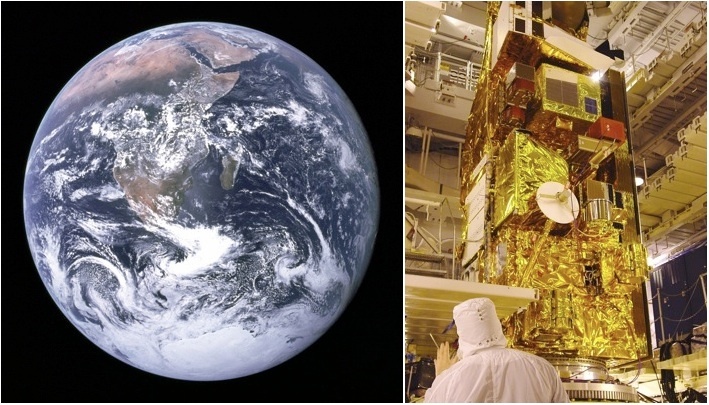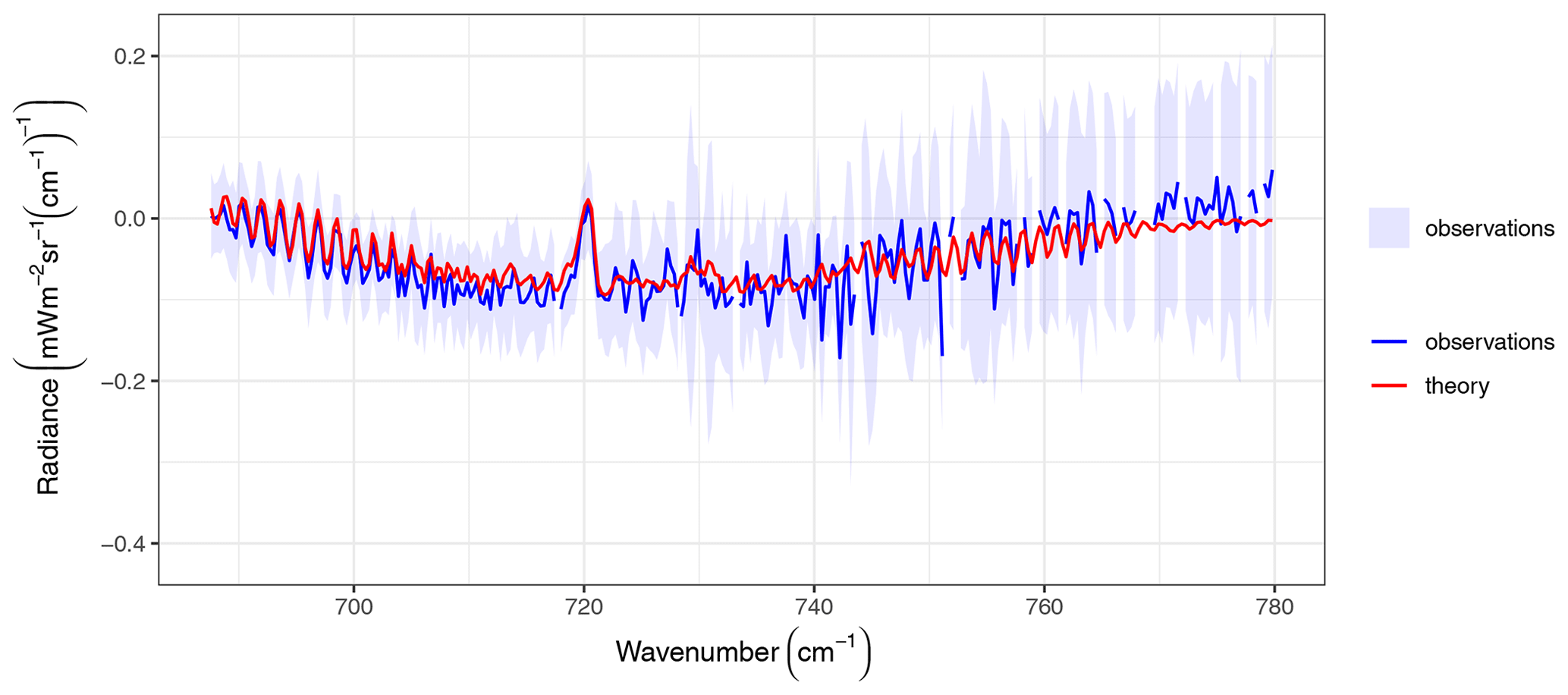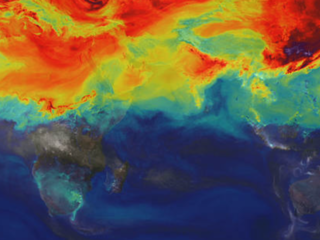News | June 10, 2006
AIRS Takes on Global Climate Change

(left) View of Earth as seen by crew of Apollo 17; (right) NASA's Aqua spacecraft in the highbay. AIRS represents the most advanced atmospheric sounding system ever deployed in space.
Global water vapor and other greenhouse gases are measured daily from space with the Atmospheric Infrared Sounder.
Although there have been satellites measuring Earth's atmosphere since the 1970's, most have been designed for weather forecasting. Climate studies, which require the detection of subtle trends and changes that can take years to appear, require a new generation of spaceborne instruments.
The Atmospheric Infrared Sounder, AIRS, flying on a NASA weather and climate research satellite called Aqua, is the first spaceborne instrument designed specifically to measure global climate change indicators. AIRS' cutting edge technology allows it to measure the amounts of water vapor and greenhouse gases with remarkable precision and accuracy. As a result, we are now beginning to gather data from space of the quality that will allow us to address many of the scientific questions related to Earth's climate and global change in the atmosphere.
Even though AIRS has only been in operation since August of 2002, not long enough by far to address many of the climate questions, it is already becoming apparent that data coming from the AIRS system are of unprecedented accuracy. Although still under evaluation, the AIRS data appears to be better than the current "gold standard" weather balloons. It is as if more than 300,000 greatly improved weather balloons were released every day all over the globe - even from uninhabited or totally inaccessible areas. For the first time we are forming a precise picture of the three-dimensional global distribution of water vapor the primary greenhouse gas.
The Greenhouse Effect: It's Mostly About Water
Water plays a very complex role in the atmosphere, because it can exist as a gas, a liquid, and a solid. Although the gaseous form acts mostly like a greenhouse gas, clouds - one of its liquid forms - can sometimes enhance the greenhouse effect or weaken it.
Severe Weather and Climate Change - Is There A Link?
There is a hypothesis that climate change, such as global warming, will lead to wider swings in weather patterns and more occurrences of severe weather. To test this hypothesis, it is crucial to measure weather and climate events fully and accurately.
Using the power of supercomputers, scientists have been able to create models of Earth's atmosphere. These models depend on measurements of water vapor and trace gases, and they can be "driven forward" in time to help us predict how climate may change in the future.
Unlocking the Secrets of Climate Change: Continuity is Key
The study of global climate change requires highly accurate measurements of Earth's atmosphere over long periods of time. Therefore it is critical that follow-on missions continue these measurements after the AIRS mission ends.






